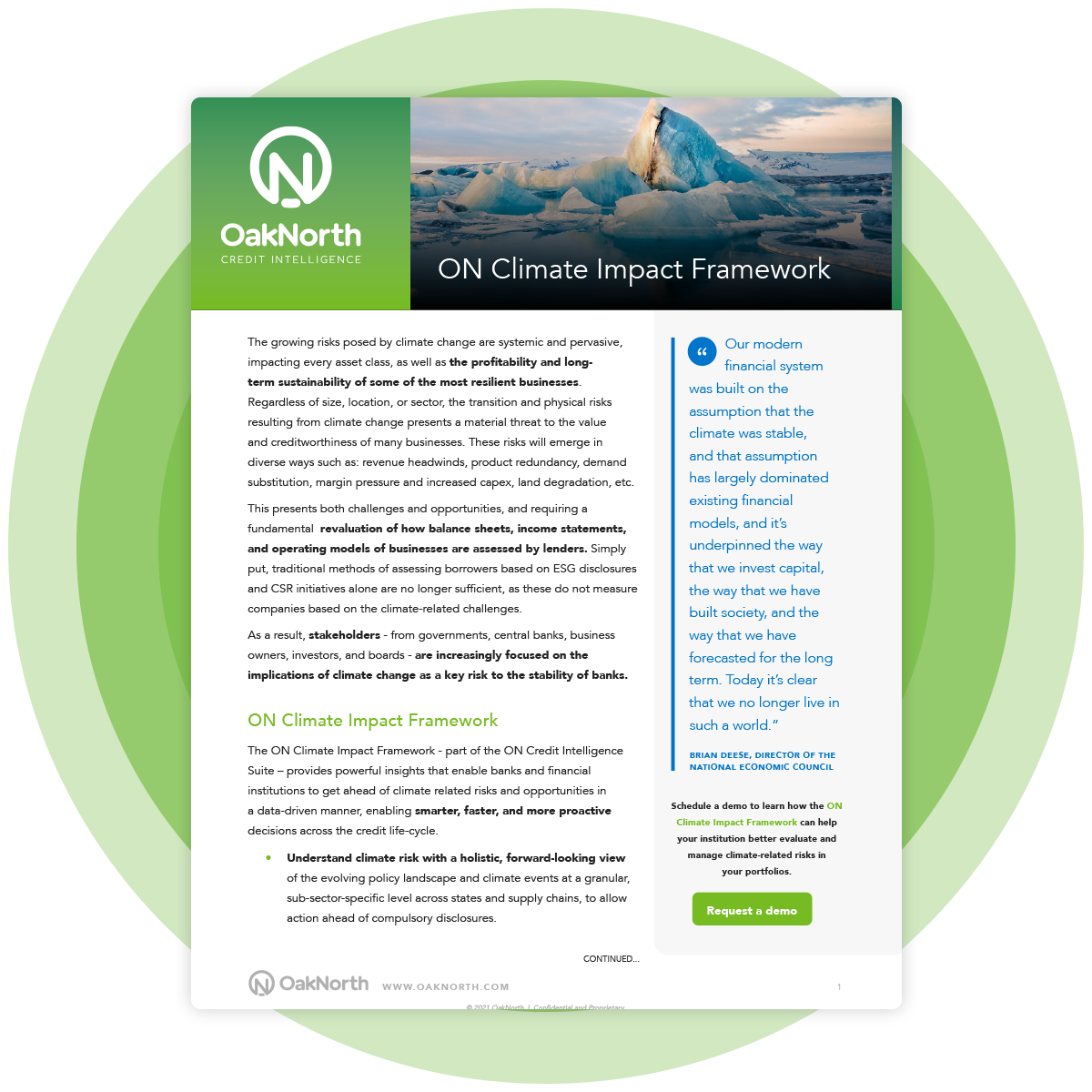Unlike Coronavirus, climate change isn’t something we can develop a vaccine for – and is here to stay. The pandemic and the ensuing economic crisis have only sharpened regulators’ determination to do what they can to avert global threats, and to build the resilience needed to mitigate their effects. Banks therefore need to be thinking about how they’ll address and analyze climate-related risks and opportunities at a portfolio level.
OakNorth hosted a webinar to discuss this topic with three ex-regulators: Mark Levonian (former Senior Deputy Comptroller of Economics at the OCC), Bruce Richards (former Senior Vice President and Head of Supervision for Complex Financial Institutions at the Federal Reserve Bank of New York), and Jeremiah Norton (former Board Member at the FDIC).
Climate change risk is top of the regulatory agenda
From the outset, the Biden administration made it clear that climate change would be high on its agenda. In November last year, only a couple of weeks after he became President-elect, Biden appointed the first ever “climate envoy”, John Kerry. In May, Biden issued an executive order for the Financial Stability Oversight Council (FSOC) to issue recommendations on how agencies can incorporate climate risk into regulatory and supervisory practices, and in June, he met with US regulators to get an update on the country’s regulatory priorities which included climate-related financial risk. We’ve seen similar prioritization at the regulatory agencies – for example, the Fed has created a Supervision Climate Committee and a Financial Stability Climate Committee.
Banks face several challenges when it comes to climate change risk
- Data: There is a scarcity of relevant, granular, and forward-looking data.
- Predicting future risks: Climate risks are by their very nature unpredictable and uncertain, so using historical data to estimate future risks is an approach that’s no fit for purpose.
- Expertise: There is a lack of expertise and understanding on climate risk across the banking sector, so the mix of skills, knowledge and experience needed is hard to find.
- Very long-term horizons: Climate risks are expected to materialise over a long-time horizon – i.e. the next 20-30 years – whereas traditional bank strategic planning horizons are 3-5 years.
- Proportionality: There is uncertainty about the appropriate governance structures required for different sized firms, and the level of detail needed to meet disclosure standards effectively.
What can be done to address these risks?
- Get your data organized and identify, measure and manage risk: Climate risk must be fully integrated into banks’ risk management frameworks, from setting risk appetite, through to risk identification and risk mitigation.
- Get to grips with governance: Banks should have a clear escalation and decision-making framework for climate risks, including someone at Board-level who has responsibility for this.
- Sign on to scenario analysis: Banks need to consider a broad range of granular, forward-looking scenarios to assess how to meet their risk management objectives and wider climate change targets.
- Get down with disclosures: To mitigate the liability risk which may arise due to failures in disclosure, banks need to be able to provide up to date data on their material exposures to climate change.
Find out how OakNorth is working with leading banks to address climate change risk in their portfolios.
Learn more

